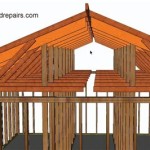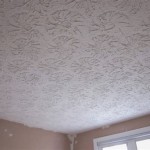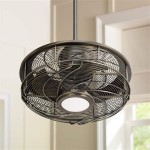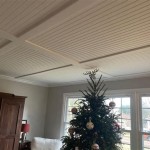Ceiling fan blades are a key component of ceiling fans, contributing to their overall efficiency and effectiveness. Whether you’re shopping for a new ceiling fan or just want to learn more about this important part, this article covers all the basics.
Types of Ceiling Fan Blades
Ceiling fan blades come in a variety of styles and sizes. The most common types are standard, paddle, and curved. Standard blades are the most basic and traditional style of fan blade, while paddle blades have curved edges that allow for more air to be moved around. Curved blades are designed to move air more efficiently in larger rooms.
Blade Materials and Finishes
Ceiling fan blades are available in a variety of materials, including wood, metal, and plastic. Wood is the most traditional material and is often used in more traditional designs. Metal blades are typically more durable and long-lasting than other options. Plastic blades are lightweight and cost-effective, but may not be as durable as metal or wood.
Ceiling fan blades come in a range of finishes, including matte, gloss, and metallic. Matte finishes are the most common and offer a modern look. Gloss finishes reflect light, adding a bit of sparkle to the fan. Metallic finishes are highly durable and offer a luxurious look.
Blade Size and Pitch
When shopping for ceiling fan blades, it’s important to keep in mind size and pitch. Fan blade size is measured in diameter, and most blades range from 24 to 72 inches. The pitch of the blades is measured in degrees, and it affects the fan’s efficiency. A higher pitch angle moves more air, while a lower angle is more efficient.
Benefits of Ceiling Fan Blades
Ceiling fan blades offer a variety of benefits, from increased energy efficiency to improved air circulation. By moving air around the room, they can help keep the room cool in the summer and warm in the winter. They’re also quieter than traditional air conditioning systems, making them a great choice for bedrooms and other quiet spaces.
Cleaning and Maintenance
Ceiling fan blades require regular cleaning and maintenance to keep them in optimal condition. To clean the blades, use a soft cloth and a mild soap and water solution. Wipe the blades down with the solution and then dry them off with a soft cloth. If the blades are particularly dirty, use a vacuum with a brush attachment to remove dust and debris.
Conclusion
Ceiling fan blades are an important component of ceiling fans, and there are a variety of types, materials, and finishes to choose from. It’s important to consider size and pitch when shopping for fan blades, and regular cleaning and maintenance will help keep them in optimal condition. Ceiling fan blades can help improve air circulation and energy efficiency, making them a great choice for any home.














Related Posts








